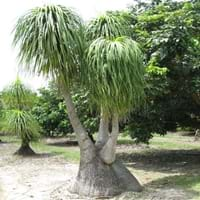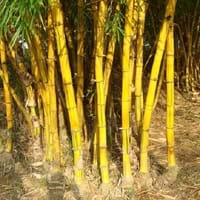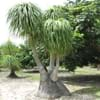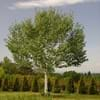Life Span
Biennial
Perennial
Origin
Mexico
China, Japan
Types
Cat palm, Date palm, Old Man palm
Not Available
Habitat
gardens, Grassland
Tropical regions
USDA Hardiness Zone
12-15
7-11
AHS Heat Zone
12-1
12 - 3
Sunset Zone
H1, H2, 13, 16, 17, 18, 19, 20, 21, 22, 23, 24
H1, 4, 5, 6, 7, 8, 9, 10, 11, 12, 13, 14, 15, 16, 17, 18, 20, 21, 22, 23, 24
Habit
Upright/Erect
Thicket/Colonizing
Flower Color Modifier
Bicolor
Bicolor
Fruit Color
Not Available
Not Available
Leaf Color in Spring
Green
Green, Yellow green
Leaf Color in Summer
Green
Light Green
Leaf Color in Fall
Green
Yellow green
Leaf Color in Winter
Green, Dark Green
Yellow
Leaf Shape
Long hair-like leaves
Long Linear
Plant Season
Spring, Summer, Fall, Winter
Spring, Summer, Fall, Winter
Sunlight
Full Sun
Full Sun, Partial Sun
Growth Rate
Slow
Very Fast
Type of Soil
Loam, Sand
Clay, Loam, Sand
The pH of Soil
Neutral
Acidic, Neutral, Alkaline
Soil Drainage
Well drained
Average
Bloom Time
Spring, Late Spring, Early Summer, Summer, Late Summer, Early Fall, Fall
Not Available
Tolerances
Drought
Pollution, Soil Compaction
Where to Plant?
Ground
Container, Ground
How to Plant?
Seedlings
Grafting, Seedlings, Stem Planting, Transplanting
Plant Maintenance
Medium
Medium
Watering Requirements
Average Water Needs
Needs watering once a week, Use Mulches to help prevent water loss during hot and windy weather, Water Deeply
In Summer
Lots of watering
Lots of watering
In Spring
Moderate
Moderate
In Winter
Average Water
Average Water
Soil pH
Neutral, Alkaline
Acidic, Neutral, Alkaline
Soil Type
Loam, Sand
Clay, Loam, Sand
Soil Drainage Capacity
Well drained
Average
Sun Exposure
Full Sun
Full Sun, Partial Sun
Pruning
Remove damaged leaves, Remove dead branches, Remove dead leaves
Do not prune during shooting season, Prune in late summer or fall, Remove damaged leaves
Fertilizers
All-Purpose Liquid Fertilizer
All-Purpose Liquid Fertilizer
Pests and Diseases
Red blotch
Black sooty mold, Mealybugs, Mosaic viruses, Powdery mildew, pythogens, Stem rot
Plant Tolerance
Drought
Drought
Flower Petal Number
Single
Single
Foliage Texture
Coarse
Medium
Foliage Sheen
Glossy
Matte
Attracts
Bugs, Butterflies, Hummingbirds, Mites, Spider Mites
Bees, Bugs
Allergy
Blurred vision, Diarrhea, Rash, Vomiting
allergic reaction, Hay fever, wheezing
Aesthetic Uses
Showy Purposes
Showy Purposes
Beauty Benefits
Not Available
Not Available
Environmental Uses
Air purification, Shadow Tree
Air purification
Medicinal Uses
Not Available
Clears heat, Cold, Treating fever, Urinary tract problems
Part of Plant Used
Not Available
Leaves
Other Uses
Not Available
Application in Handicrafts, Showy Purposes, Used As Food, Used in Furniture, Used in paper industry
Used As Indoor Plant
No
No
Used As Outdoor Plant
Yes
Yes
Garden Design
Container, Feature Plant, Foundation, Houseplant, Tropical
Container, Feature Plant, Screening / Wind Break, Tropical
Botanical Name
BEAUCARNEA recurvata
PHYLLOSTACHYS aurea
Common Name
Bottle Palm, Ponytail Palm
Golden Bamboo, Running Bamboo
In Hindi
Ponytail Palm
Bānsa
In German
Pferdeschwanz Palm
Bambus
In French
Ponytail Palm
Bambou
In Spanish
Cola de caballo de palma
Bambú
In Greek
αλογοουρά παλάμη
μπαμπού
In Portuguese
rabo- de palma
bambu
In Polish
kucyk palmowy
Bambus
In Latin
ponytail palmarum
Bamboo
Phylum
Vascular plant
Magnoliophyta
Class
Liliopsida
Liliopsida
Genus
Beaucarnea
Acidosasa
Clade
Angiosperms
Not Available
Tribe
Not Available
Bambuseae
Subfamily
Nolinoideae
Not Available
Number of Species
Not Available
Properties of Ponytail Palm and Golden Bamboo
Wondering what are the properties of Ponytail Palm and Golden Bamboo? We provide you with everything About Ponytail Palm and Golden Bamboo. Ponytail Palm doesn't have thorns and Golden Bamboo doesn't have thorns. Also Ponytail Palm does not have fragrant flowers. Ponytail Palm has allergic reactions like Blurred vision, Diarrhea, Rash and Vomiting and Golden Bamboo has allergic reactions like Blurred vision, Diarrhea, Rash and Vomiting. Compare all the properties and characteristics of these two plants. Find out which of these plant can be used as indoor plant. If you are interested to decorate your house and garden, find out aesthetic uses, compare them and select the plant which will beautify your surrounding. Along with beautification, try comparing medicinal and edible uses of Ponytail Palm and Golden Bamboo and you can choose the plant having best and most benefits.
Season and Care of Ponytail Palm and Golden Bamboo
Season and care of Ponytail Palm and Golden Bamboo is important to know. While considering everything about Ponytail Palm and Golden Bamboo Care, growing season is an essential factor. Ponytail Palm season is Spring, Summer, Fall and Winter and Golden Bamboo season is Spring, Summer, Fall and Winter. The type of soil for Ponytail Palm is Loam, Sand and for Golden Bamboo is Clay, Loam, Sand while the PH of soil for Ponytail Palm is Neutral and for Golden Bamboo is Acidic, Neutral, Alkaline.
Ponytail Palm and Golden Bamboo Physical Information
Ponytail Palm and Golden Bamboo physical information is very important for comparison. Ponytail Palm height is 457.20 cm and width 365.76 cm whereas Golden Bamboo height is 180.00 cm and width 30.00 cm. The color specification of Ponytail Palm and Golden Bamboo are as follows:
Ponytail Palm flower color: Ivory
Ponytail Palm leaf color: Green
Golden Bamboo flower color: White
- Golden Bamboo leaf color: Green and Yellow green
Care of Ponytail Palm and Golden Bamboo
Care of Ponytail Palm and Golden Bamboo include pruning, fertilizers, watering etc. Ponytail Palm pruning is done Remove damaged leaves, Remove dead branches and Remove dead leaves and Golden Bamboo pruning is done Do not prune during shooting season, Prune in late summer or fall and Remove damaged leaves. In summer Ponytail Palm needs Lots of watering and in winter, it needs Average Water. Whereas, in summer Golden Bamboo needs Lots of watering and in winter, it needs Average Water.





